Scales & Arpeggios
The first thing about doing scales that I would suggest is to do the scales up as high as you can go, only playing notes in that scale, and down as low as you can go, using only those notes in that scale. In other words, a C scale would go up to high F and down to low B. Like this:
C Major Scale:
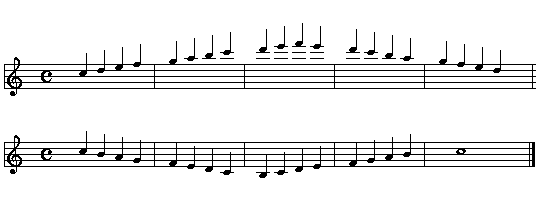
G major would go up to high E and down to low B. Doing your scales one or two octaves up and down is alright in the beginning, but you should try to play all scales over the entire horn, you get much more bang for your buck. By doing this you are practicing scales in areas of your horn you might not get a chance to play in very often. Check out the major scale lesson page here. Be sure to play the minor scales too, here. For a great exercise playing arpeggios that cycle around all twelve keys, go here. Be sure to play these scales and patterns both tongued and slurred. Vary your articulations. Slur two, tongue two, then tongue two, slur two. Slur three, tongue one,…etc, etc.
Patterns
As soon as possible, you want to start playing patterns with your scales. Start with scales in thirds. Like this:
Scales in thirds:

Scales in fourths:

Another great little finger buster is this pattern:

Here is a good little warm up exercise. Transpose to all scales.
First tongue each note, then slur the entire scale.


Here is a neat little exercise that goes through the circle of fourths using dominant seventh chords.
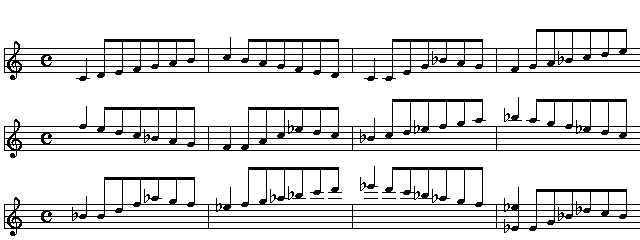
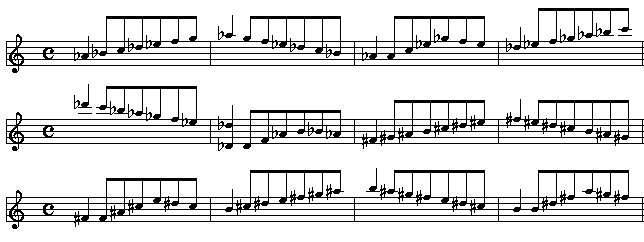
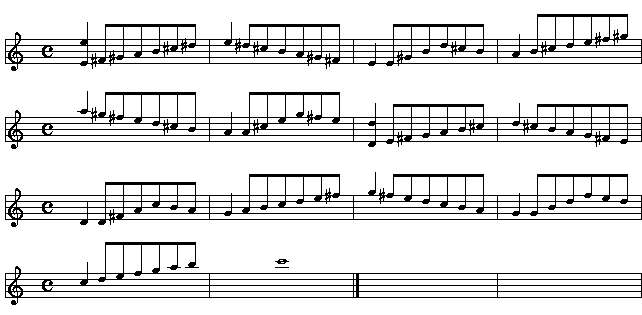
Arpeggios
Arpeggios should be played over the entire range of the Saxophone. I would recommend that you start with major triads, then major 7’s, major 9 arpeggios. When you’re feeling comfortable, go on to minor triads, followed by minor 7’s, then minor 9’s. Finally, practice the dominant 7ths and dominant 9ths. Here are a few examples of arpeggios.
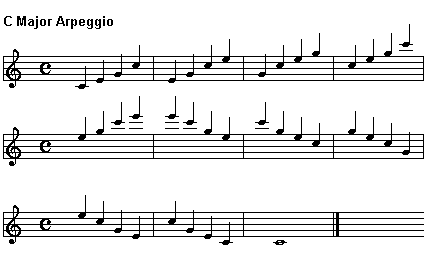
C minor 7 Arpeggio
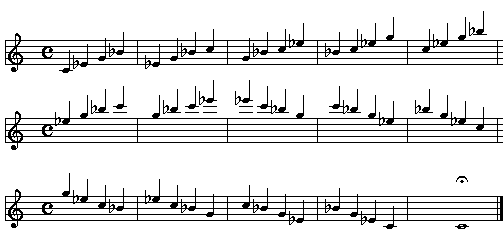
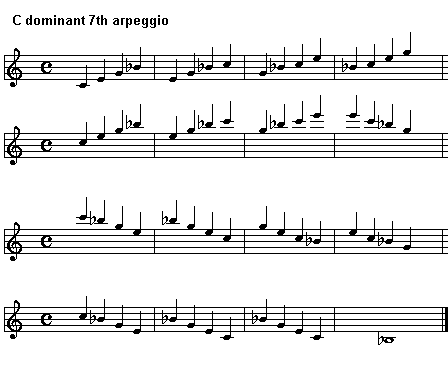
There are three forms of minor that you should be familiar with. Melodic minor, ascending and descending, and harmonic minor. The melodic minor descending scale is also known as the “natural” minor scale. The way that I think about these scales is that the ascending is just like a major scale, only it has a flatted third. The descending melodic minor scale has the same key signature as the relative major key, Eb major, in this case. Here is an example of a C melodic minor scale.

This is an example of a C harmonic minor scale. This scale has a very recognizable sound because of the augmented second between the sixth and seventh degrees. It has an Eastern European, or Baltic sound. I have heard it described as a “gypsy” scale.

A good idea is to practice your scales in some logical manner. One method would be to take one scale a week and practice that scale only. As you improve and start playing more scales, i.e., minor scales, pentatonic, blues scales, etc., you should go through all of the scales you know in that key.
Practicing your scales with a metronome is highly recommended. I didn’t say easy, but it will do good things for your technique. I am on my fourth metronome. The others have met untimely deaths due to their… ahem… inaccuracy, shall we say? Set your metronome for a medium tempo and begin playing. Think of the clicks as quarter notes. Gradually increase the speed till you reach the point of failure, in other words, where you just can’t do it anymore at that speed. Find out where your “point of failure” is and back the metronome down ten beats per minute. Stay at that tempo for a few days at least, until you are very comfortable at that tempo. Then you can start bumping it up a little at a time. It is more important to be able to play scales accurately and correctly than to try and go too fast, too soon. A metronome is a great tool, use it regularly. It will help you to gain control over the horn instead of the horn having control over you. That is the point, after all, isn’t it?





